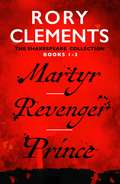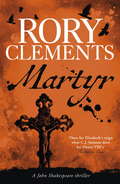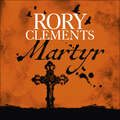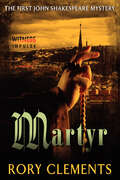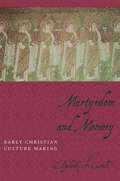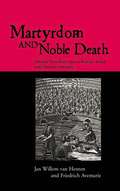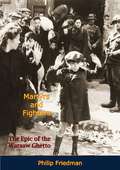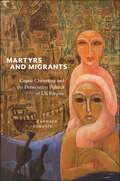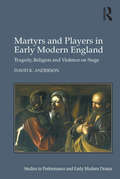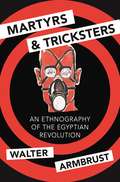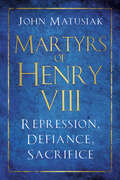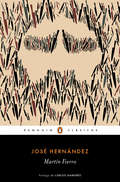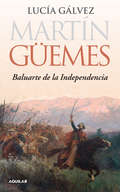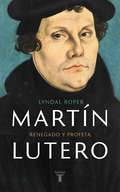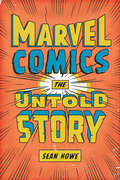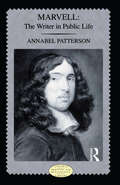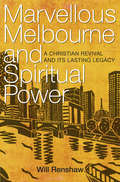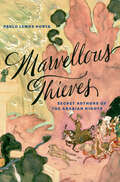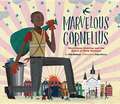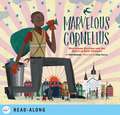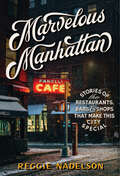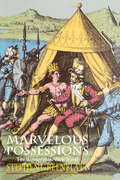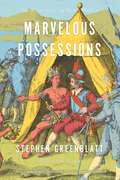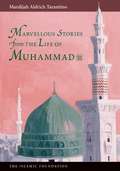- Table View
- List View
Martyr/Revenger/Prince (John Shakespeare)
by Rory ClementsThe first three books of the bestselling John Shakespeare series of Tudor spy thrillers from Rory Clements, author of the Sunday Times bestseller Hitler's Secret ***MartyrTensions in Elizabeth I's government are at breaking point. At the eye of the storm is John Shakespeare, chief intelligencer in the secret service of Sir Francis Walsingham. When an intercept reveals a plot to assassinate England's 'sea dragon', Francis Drake, Shakespeare is ordered to protect him. With Drake on land fitting out his ships, he is frighteningly vulnerable. If he dies, England will be open to invasion.From the splendour and intrigue of the royal court, to the sleek warships of Her Majesty's Navy and the teeming brothels of Southwark, Shakespeare soon learns that nothing is as it seems . . .RevengerThe quiet life of John Shakespeare is shattered by a summons from Robert Cecil, the cold but deadly young statesman who dominated the last years of the Queen's long reign, insisting Shakespeare re-enter government service. His mission: to find vital papers, now in the possession of the Earl of Essex.When John Shakespeare infiltrates this dissolute world he discovers not only that the Queen herself is in danger - but that he and his family is also a target. With only his loyal footsoldier Boltfoot Cooper at his side, Shakespeare must face implacable forces who believe themselves above the law. And in a world of shifting allegiances, just how far he can trust Robert Cecil, his devious new master?PrinceDriven on by cold rage, Shakespeare's investigations will take him from magnificent royal horseraces to the opulent chambers of Black Luce's brothel, from the theatrical underworld of Marlowe and Kyd to the pain-wracked torture cells of priest-hunter Richard Topcliffe, and from the elegant offices of master tactician Robert Cecil to the splintering timbers of an explosive encounter at sea.As Shakespeare delves ever deeper, he uncovers intricate layers of mystery and deception that threaten the heart not only of the realm, but of all that he holds dear.
Martyr: John Shakespeare 1 (John Shakespeare #1)
by Rory Clements***Part of the bestselling John Shakespeare series of Tudor spy thrillers from Rory Clements, author of the Sunday Times bestseller Hitler's Secret ***'Does for Elizabeth's reign what CJ Sansom does for Henry VIII's' Sunday TimesEngland is close to war. Within days the axe could fall on the neck of Mary Queen of Scots, and Spain is already gathering a battle fleet to avenge her. Tensions in Elizabeth I's government are at breaking point. At the eye of the storm is John Shakespeare, chief intelligencer in the secret service of Sir Francis Walsingham. When an intercept reveals a plot to assassinate England's 'sea dragon', Francis Drake, Shakespeare is ordered to protect him. With Drake on land fitting out his ships, he is frighteningly vulnerable. If he dies, England will be open to invasion. In a London rife with rumour, Shakespeare must decide which leads to follow, which to ignore. When a high-born young woman is found mutilated and murdered at an illicit printing house, it is political gunpowder - and he has no option but to investigate.But why is Shakespeare shadowed at every turn by the brutal Richard Topcliffe, the blood-drenched priest-hunter who claims intimacy with Queen Elizabeth herself? What is Topcliffe's interest in a housemaid, whose baby has been stolen? And where do two fugitive Jesuit priests fit into the puzzle, one happy to die for God, the other to kill for Him? From the splendour and intrigue of the royal court, to the sleek warships of Her Majesty's Navy and the teeming brothels of Southwark, Shakespeare soon learns that nothing is as it seems . . .
Martyr: John Shakespeare 1 (John Shakespeare #1)
by Rory ClementsMARTYR is the first in the acclaimed and bestselling John Shakespeare Elizabethan mystery series by Rory Clements, winner of the Ellis Peters Historical Fiction Award. 'Does for Elizabeth's reign what CJ Sansom does for Henry VIII's' Sunday TimesEngland is close to war. Within days the axe could fall on the neck of Mary Queen of Scots, and Spain is already gathering a battle fleet to avenge her. Tensions in Elizabeth I's government are at breaking point. At the eye of the storm is John Shakespeare, chief intelligencer in the secret service of Sir Francis Walsingham. When an intercept reveals a plot to assassinate England's 'sea dragon', Francis Drake, Shakespeare is ordered to protect him. With Drake on land fitting out his ships, he is frighteningly vulnerable. If he dies, England will be open to invasion. In a London rife with rumour, Shakespeare must decide which leads to follow, which to ignore. When a high-born young woman is found mutilated and murdered at an illicit printing house, it is political gunpowder - and he has no option but to investigate.But why is Shakespeare shadowed at every turn by the brutal Richard Topcliffe, the blood-drenched priest-hunter who claims intimacy with Queen Elizabeth herself? What is Topcliffe's interest in a housemaid, whose baby has been stolen? And where do two fugitive Jesuit priests fit into the puzzle, one happy to die for God, the other to kill for Him? From the splendour and intrigue of the royal court, to the sleek warships of Her Majesty's Navy and the teeming brothels of Southwark, Shakespeare soon learns that nothing is as it seems . . .(P)2010 Oakhill Publishing
Martyr: The First John Shakespeare Mystery (John Shakespeare Mystery Ser. #1)
by Rory ClementsA court spy must stop the assassination of Sir Francis Drake while solving a royal murder in this gritty Elizabethan mystery—an “excellent debut” (Publishers Weekly, starred review).England, 1587. Tensions run high in the court of Elizabeth I. Within days the axe could fall on the neck of Mary, Queen of Scots, and Spain is already gathering a battle fleet to avenge her.At the center of the storm is John Shakespeare, chief intelligencer in the secret service of Sir Francis Walsingham. When an intercept reveals a plot to assassinate England’s “sea dragon,” Francis Drake, Shakespeare is ordered to protect him. Busy fitting out his ships on land, Drake is frighteningly vulnerable. If he dies, England will be open to invasion.From the splendor and intrigue of the royal court to the sleek warships of Her Majesty’s Navy and the teeming brothels of Southwark, Shakespeare soon learns that nothing is as it seems . . .
Martyrdom and Memory: Early Christian Culture Making (Gender, Theory, and Religion)
by Elizabeth CastelliMartyrs are produced, Elizabeth Castelli suggests, not by the lived experience of particular historical individuals but by the stories that are later told about them. And the formulaic character of stories about past suffering paradoxically serves specific theological, cultural, or political ends in the present. Martyrdom and Memory explores the central role of persecution in the early development of Christian ideas, institutions, and cultural forms and shows how the legacy of Christian martyrdom plays out in today's world. In the pre-Constantinian imperial period, the conflict between Roman imperial powers and the subject Christian population hinged on competing interpretations of power, submission, resistance, and victory. This book highlights how both Roman and Christian notions of law and piety deployed the same forms of censure and critique, each accusing the other of deviations from governing conventions of gender, reason, and religion. Using Maurice Halbwachs's theoretical framework of collective memory and a wide range of Christian sources—autobiographical writings, martyrologies and saints'lives, sermons, art objects, pilgrimage souvenirs, and polemics about spectacle—Castelli shows that the writings of early Christians aimed to create public and ideologically potent accounts of martyrdom. The martyr's story becomes a "usable past" and a "living tradition" for Christian communities and an especially effective vehicle for transmitting ideas about gender, power, and sanctity. An unlikely legacy of early Christian martyrdom is the emergence of modern "martyr cults" in the wake of the 1999 shootings at Columbine High School. Focusing specifically on the martyr cult associated with one of the victims, Martyrdom and Memory argues that the Columbine story dramatically expresses the ongoing power of collective memory constructed around a process of rendering tragic suffering redemptive and meaningful. In the wake of Columbine and other contemporary legacies of martyrdom's ethical ambivalence, the global impact of Christian culture making in the early twenty-first century cannot be ignored. For as the last century's secularist hypothesis sits in the wings, "religion" returns to center stage with one of this drama's most contentious yet riveting stars: the martyr.
Martyrdom and Noble Death: Selected Texts from Graeco-Roman, Jewish and Christian Antiquity (Context Of Early Christianity Ser.)
by Friedrich Avemarie Jan Willem van HentenThis volume explores the fascinating phenomenon of noble death through pagan, Jewish and Christian sources. Today's society is uncomfortable with death, and willingly submitting to a violent and ostentatious death in public is seen as particularly shocking and unusual. Yet classical sources give a different view, with public self-sacrifice often being applauded. The Romans admired a heroic end in the battlefield or the arena, suicide in the tradition of Socrates was something laudable, and Christians and Jews alike faithfully commemorated their heroes who died during religious persecutions. The cross-cultural approach and wide chronological range of this study make it valuable for students and scholars of ancient history, religion and literature.
Martyrs and Fighters: The Epic of the Warsaw Ghetto
by Philip FriedmanThe heroic Warsaw Ghetto epic that inspired "The Wall" and "Mila 18."Told by the survivors...It's the story of the most desperate battle in history against the most bitter odds. The true story of the Warsaw Ghetto: they had almost no weapons: they could not possibly win.-Print ed.“The systematic and thorough annihilation of Jewish communities, wherever found, was one of the main objectives of the ferocious doctrine of Nazism, bred on German soil. On September 1, 1939 the German army invaded Poland where the Jewish community had existed for many centuries and where three million Jews were living at the time of the invasion. Ruthless extermination of the Jews began at once and eventually reached dreadful proportions never before known in human history. To accomplish this mass annihilation more efficiently, the Nazi occupants established segregated areas, or ghettos, in many Polish cities, where the Jews were forced to live. The largest ghetto was in Warsaw, where half a million human beings were herded together in a very small area in which physical and moral conditions made life a trying experience.Although they faced inevitable deportation to death camps and gas chambers, the spirit of these free human beings was not daunted. The Jewish inhabitants of Warsaw, though eventually reduced to one-tenth of their original strength by the Nazis, were determined not to surrender; they made up their minds to exact a heavy toll from their oppressors and murderers. The Jewish insurrection in the Polish capital was a bold challenge to the Nazi tyrants—a historic manifestation of faith in freedom and in the innate rights of man against slavery, oppression and degradation of the human spirit.”-Introduction.
Martyrs and Migrants: Coptic Christians and the Persecution Politics of US Empire (North American Religions)
by Candace LukasikHow Coptic Christian migrants reshape religious identity through the imagination of US empireCoptic Orthodox Christians comprise the largest Christian community in the Middle East and are among the oldest Christian communities in the world. While once the objects of American missionary efforts, in recent years Copts have been in the spotlight for their Christianity. A spate of ISIS-related bombings and attacks have garnered worldwide attention, leading to a series of efforts from US politicians, think tanks, and NGOs to re-channel their efforts into “saving” these Middle Eastern Christians from Muslims. The increased targeting of Copts has also contributed to the moral imaginary of the “Persecuted Church,” particularly among American evangelicals, which embraces the idea that Christians around the globe are currently being persecuted more than any other time in history.Drawing on years of extensive fieldwork among Coptic migrants between Egypt and the United States, Martyrs and Migrants examines how American religious imaginaries of global Christian persecution have remapped Coptic collective memory of martyrdom. Transnational Copts have navigated the sociopolitical conditions in Egypt and the global consequences of the US “war on terror” by translating their suffering into the ambiguous forms of religious and political visibility. Candace Lukasik argues that the commingling of American conservatives and Copts has shaped a new kind of Christian kinship in blood, operating through a double movement between glorification and racialization. Occupying a position between threat and victim, Copts from the Middle East have been subject to anti-terror surveillance in the US even as they have leveraged their roles as “persecuted Christians.” Through Lukasik’s careful examination of the everyday processes shaping Coptic communal formation, Martyrs and Migrants broadly reveals how ideologies of spiritual kinship are forged through theological histories of martyrdom and of blood, demonstrating the global dynamics and imperial politics of contemporary Christianity.
Martyrs and Players in Early Modern England: Tragedy, Religion and Violence on Stage (Studies in Performance and Early Modern Drama)
by David K. AndersonFocusing on Christopher Marlowe, William Shakespeare, John Webster and John Milton, Martyrs and Players in Early Modern England argues that the English tragedians reflected an unease within the culture to acts of religious violence. David Anderson explores a link between the unstable emotional response of society to religious executions in the Tudor-Stuart period, and the revival of tragic drama as a major cultural form for the first time since classical antiquity. Placing John Foxe at the center of his historical argument, Anderson argues that Foxe’s Book of Martyrs exerted a profound effect on the social conscience of English Protestantism in his own time and for the next century. While scholars have in recent years discussed the impact of Foxe and the martyrs on the period’s literature, this book is the first to examine how these most vivid symbols of Reformation-era violence influenced the makers of tragedy. As the persecuting and the persecuted churches collided over the martyr’s body, Anderson posits, stress fractures ran through the culture and into the playhouse; in their depictions of violence, the early modern tragedians focused on the ethical confrontation between collective power and the individual sufferer. Martyrs and Players in Early Modern England sheds new light on the particular emotional energy of Tudor-Stuart tragedy, and helps explain why the genre reemerged at this time.
Martyrs and Tricksters: An Ethnography of the Egyptian Revolution (Princeton Studies in Muslim Politics #72)
by Walter ArmbrustAn important look at the hopeful rise and tragic defeat of the Egyptian Revolution of 2011The Egyptian Revolution of 2011 began with immense hope, but was defeated in two and a half years, ushering in the most brutal and corrupt regime in modern Egyptian history. How was the passage from utmost euphoria into abject despair experienced, not only by those committed to revolutionary change, but also by people indifferent or even hostile to the revolution? In Martyrs and Tricksters, anthropologist and Cairo resident Walter Armbrust explores the revolution through the lens of liminality—initially a communal fellowship, where everything seemed possible, transformed into a devastating limbo with no exit. To make sense of events, Armbrust looks at the martyrs, trickster media personalities, public spaces, contested narratives, historical allusions, and factional struggles during this chaotic time.Armbrust shows that while martyrs became the primary symbols of mobilization, no one took seriously enough the emergence of political tricksters. Tricksters appeared in media—not the vaunted social media of a “Facebook revolution” but television—and they paved the way for the rise of Abd al-Fattah al-Sisi. In the end Egypt became a global political vanguard, but not in the way the revolutionaries intended. What initially appeared as the gateway to an age of revolution has transformed the world over into the age of the trickster.Delving into how Egyptians moved from unprecedented exhilaration to confusion and massacre, Martyrs and Tricksters is a powerful cultural biography of a tragic revolution.
Martyrs of Henry VIII: Repression, Defiance, Sacrifice
by John MatusiakTudor England was a place of religious upheaval and uncertainty, as the Catholic church was replaced by the Church of England, with Henry VIII at its head. When Henry VIII passed through Canterbury in 1532, a young woman named Elizabeth Barton, known as the Holy Maid of Kent and widely revered as a visionary, warned him that he was 'so abominable in the sight of God that he was not worthy to tread on hallowed ground'. Two years later she was executed as an enemy of the state, but she would not be the last to be punished for her faith – the summer of 1535 would see many others suffer the same fate. On 14 June 1535, Carthusian monk Sebastian Newdigate was dragged to Tyburn and hanged, drawn and quartered for his continued loyalty to the Catholic faith. On 22 June 1535, John Fisher was beheaded on Tower Hill for upholding the Roman Catholic Church's doctrine of papal supremacy. On 6 July 1535, former Chancellor of England Sir Thomas More was executed for refusing to acknowledge Henry VIII as the Supreme Head of the Church. All three were recognised as martyrs and beatified by the Catholic church in 1886, with Sir Thomas More and John Fisher recognised as saints. In Martyrs of Henry VIII, John Matusiak brings the lives of these Catholic martyrs together in a joint biography that opens a window into one of the most dangerous periods of England's religious history.
Martín Fierro
by José HernandezEl poema nacional por excelencia, la obra cumbre del género gauchesco en su edición definitiva, con prólogo de Carlos Gamerro y notas introductorias de Alejandra Laera. «Nunca se achican los males / Van poco a poco creciendo, / y ansina me vide pronto / Obligao a andar juyendo / No tenia mujer ni rancho, / Y a más era resertor; / No tenia una prenda güena / Ni un peso en el tirador.»(Canto VII) Escritos en 1872 y 1879, los dos volúmenes que componen el poema épico Martín Fierro son la culminación del género gauchesco y el máximo exponente de la literatura argentina a nivel mundial. A través de la narración de las peripecias del héroe -el gaucho Fierro, uno de los personajes más vitales, brutales y contradictorios de las letras nacionales-, José Hernández pone en evidencia la cruda realidad a la que se veían enfrentados los hombres del siglo XIX enviados a la frontera a luchar contra los indios y denuncia los abusos de poder por parte de un Estado corrupto y arbitrario. «El Martín Fierro se ha entrelazado hasta tal punto con su mundo, que es el nuestro; con nuestra literatura anterior y posterior, nuestra lengua, nuestro pensamiento, nuestra política, nuestros valores y maneras de vivir y sentir y mirar ese mundo, que ya no sabemos si provienen del mundo o del poema.»Del prólogo de Carlos Gamerro
Martín Güemes
by Lucía GálvezLa vida pública y privada de Martín Güemes, el hombre que se convirtió en mito. Martín Güemes. Baluarte de la Independencia nos introduce en el misterio de esa figura con estatura de mito que todavía hoy los norteños recuerdan y veneran como a uno de sus ídolos más entrañables. De entre las innumerables historias que conforman la gesta de la independencia americana, se destaca con nitidez la empresa que encabezó Martín Güemes en el norte del actual territorio argentino. Si frenar el avance de las fuerzas españolas no era fácil, hacerlo no una sino siete veces fue una verdadera hazaña, y llevarlo adelante con tácticas de guerrilla ejecutadas por una milicia de gauchos mal armados es una verdadera epopeya, definida por Bartolomé Mitre como "la más extraordinaria guerra defensiva-ofensiva [...], la más completa, la más original y la más hermosa de cuantas en su género puede presentar la historia del Nuevo Mundo". Lucía Gálvez, historiadora e investigadora argentina de reconocido prestigio, narra la vida pública y privada de Martín Güemes: su n acimiento en el seno de una rica familia salteña; los primeros y audaces pasos en la defensa de Buenos Aires durante las Invasiones Inglesas; el ascendiente que supo ejercer sobre sus hombres, capaces de dejarse matar por él; la bravura con la que enfrentó a las fuerzas invasoras y la determinación con la que rechazó las intrigas de sus pares y de algunos gobernantes; su deseo de ser el colaborador de San Martín en la liberación de todo el continente, que una temprana y trágica muerte truncó.
Martín Lutero: Renegado y profeta
by Lyndal RoperEn el V centenario de la Reforma, Taurus publica la biografía definitiva de Martin Lutero. Cuando Martín Lutero clavó una hoja de papel a la puerta de la iglesia de una pequeña ciudad universitaria el 31 de octubre de 1517, desencadenó un proceso que cambió el mundo occidental para siempre. Las ideas de Lutero se extendieron como la pólvora. Su ataque a la Iglesia pronto convulsionó Alemania, dividió Europa y polarizó las creencias. Desencadenó décadas de persecución religiosa, malestar social y guerra. A largo plazo, sus ideas, paradójicamente, ayudaron a romper el dominio de la religión en todos los ámbitos de la vida. Pero el hombre que inició la Reforma fue profundamente defectuoso, fundamentalista religioso, antisemita y políticamente reaccionario. Era un ferviente creyente que vivía atormentado por las dudas, un brillante escritor que dio forma a la lengua alemana y un polemista violento y malhablado. Era un ex-monje casado que liberó la sexualidad humana del estigma del pecado, pero al mismo tiempo que insistió en que las mujeres debían mantenerse en un lugar secundario. Esta biografía histórica, la primera en muchas décadas, nos ofrece una figura de carne y hueso, con todos sus defectos y revela las fuerzas psicológicas a menudo contradictorias que condujeron a Lutero y cambiaron el curso de la historia, y cómo un pequeño acto de protesta se convirtió en una lucha que modificaría para siempre la Iglesia y marcaría el comienzo de un nuevo mundo. Reseñas:«Un empeño convincente y sugerente por devolverle algo de carne y hueso a este icono estático. Lyndal Roper es una de las historiadoras más imaginativas y audaces de su generación.»Alexandra Walsham, The Guardian «La biografía de Roper, que se distingue por la excelencia de su escritura y la investigación, ofrece las bases de la sabiduría en todo lo relacionado con la Reforma.»Ian Thomson, The Observer «El libro de historia ejemplar: imaginativo aunque empírico, redondo y profundo.»Malcolm Gaskill, Financial Times «Un libro magnífico.»New Statesman «Lyndal Roper cuenta con un estupendo estilo narrativo la extraordinaria vida de Lutero. Nos transmite la imagen de un #héroe difícil#, poniendo toda su atención tanto a las luces como a las sombras. Un estudio convincente, accesible y muy bien documentado.»Rowan Williams
Marvel Comics: The Untold Story
by Sean HoweInterweaves history, anecdotes, and analysis with more than one hundred interviews with Marvel insiders to reveal how Marvel, which introduced brightly costumed caped crusaders in the 1960s, became one of the most dominant pop cultural forces in contemporary America.
Marvell: The Writer in Public Life (Longman Medieval and Renaissance Library)
by Annabel M. PattersonMarvell: The Writer in Public Life is substantially revised from Professor Patterson's well received 1978 study, including a new introduction and new chapter on Marvell and secret history. This important study provides an up to date perspective on a writer still thought of merely as the author of lyric and pastoral poems. It looks at both Marvell's political poetry and his often neglected political prose, revealing Marvell's life long commitment to writing about the values and standards of public life and follows his often dangerous writerly activities on behalf of freedom of conscience and constitutional government.
Marvellous Melbourne and Spiritual Power: A Christian Revival and Its Lasting Legacy
by Will RenshawMarvellous Melbourne and Spiritual Power is a unique record of the rich Christian spiritual heritage of Melbourne. The foundations for this heritage were laid within the city's first months of European settlement, when Henry Reed preached the gospel at Port Phillip in 1835. In the decades that followed, many gathered regularly to pray for evangelistic and missionary activity, and for a revival of faith in the young nation. One significant outcome was the growth of a flourishing evangelical movement in Victoria with its distinctive Keswick-style convention ministry, which originated in England and proclaimed abundant life and full salvation.This is a story of how God equips ordinary people to become extraordinary leaders in his service. It is a powerful testimony to the importance of persevering prayer and intercession in the deep reviving work of God in his church and the wider community.
Marvellous Thieves: Secret Authors of the Arabian Nights
by Paulo Lemos HortaRanging from the coffeehouses of Aleppo to the salons of Paris, from Calcutta to London, Paulo Lemos Horta introduces the poets and scholars, pilgrims and charlatans who made largely unacknowledged contributions to Arabian Nights. Each version betrays the distinctive cultural milieu in which it was produced.
Marvelous Cornelius
by Phil Bildner John ParraIn New Orleans, there lived a man who saw the streets as his calling, and he swept them clean. He danced up one avenue and down another and everyone danced along. The old ladies whistled and whirled. The old men hooted and hollered. The barbers, bead twirlers, and beignet bakers bounded behind that one-man parade. But then came the rising Mississippi--and a storm greater than anyone had seen before. In this heartwarming book about a real garbage man, Phil Bildner and John Parra tell the inspiring story of a humble man and the heroic difference he made in the aftermath of Hurricane Katrina.
Marvelous Cornelius: Hurricane Katrina and the Spirit of New Orleans
by Phil BildnerIn New Orleans, there lived a man who saw the streets as his calling, and he swept them clean. He danced up one avenue and down another and everyone danced along. The old ladies whistled and whirled. The old men hooted and hollered. The barbers, bead twirlers, and beignet bakers bounded behind that one-man parade. But then came the rising Mississippi—and a storm greater than anyone had seen before. In this heartwarming book about a real garbage man, Phil Bildner and John Parra tell the inspiring story of a humble man and the heroic difference he made in the aftermath of Hurricane Katrina. Plus, this is the fixed format version, which will look almost identical to the print version. Additionally for devices that support audio, this ebook includes a read-along setting.
Marvelous Manhattan: Stories of the Restaurants, Bars, and Shops That Make This City Special
by Reggie Nadelson&“A wonderfully lively, knowledgeable journey through the past and present of places that help make New York City what it is, and which we must cherish and (hopefully) preserve.&” —Salman Rushdie New York might have Broadway, Times Square, and the Empire State Building, but the real heart and soul of the city can be found in the iconic places that have defined cool since &“cool&” became a word. Places like Di Palo&’s in Little Italy, where you might stop in to pick up a little cheese only to find yourself in a long conversation—part friendly chat, part profound tutorial—with fourth-generation owner Lou Di Palo, sampling cheeses all the while. Or Raoul&’s in SoHo, to enjoy a classic steak-frites in the company of downtown artists, celebrities, and dyed-in-the-wool locals. Or Minton&’s Playhouse in Harlem, to be in the room where some young guys named Thelonious, Dizzy, and Charlie invented bebop. Or maybe Russ & Daughters, to pick up the city&’s best lox and bagels, which they&’ve been selling since 1914. A lifelong New Yorker, writer Reggie Nadelson celebrates her city and all the places that make it special. Part guidebook, part cultural history, part walk down memory lane, alive with the spirit and the grit of small, often family-owned businesses that have survived the Great Depression, World War II, 9/11, and the coronavirus lockdown, Marvelous Manhattan is a seductive and timely book for anyone who lives in New York, loves the city, lived there once, or wishes they had. Because that&’s the thing about Manhattan: all you need to do is walk into the right place—say, Fanelli&’s on Prince Street—sit down at the bar, order a drink, open this book, and suddenly you&’re a New Yorker.
Marvelous Possessions: The Wonder of the New World
by Stephen GreenblattExplores how Europeans of the late Middle Ages and early modern period represented newly discovered exotic peoples in travel narratives, judicial documents, and official reports. Especially shows how the sense of the marvellous was primarily used to encourage the appropriation of new lands (but not always).
Marvelous Possessions: The Wonder of the New World (Carpenter Lectures)
by Stephen GreenblattA masterwork of history and cultural studies, Marvelous Possessions is a brilliant meditation on the interconnected ways in which Europeans of the Age of Discovery represented non-European peoples and took possession of their lands, particularly in the New World. In a series of innovative readings of travel narratives, judicial documents, and official reports, Stephen Greenblatt shows that the experience of the marvelous, central to both art and philosophy, was manipulated by Columbus and others in the service of colonial appropriation. Much more than simply a collection of the odd and exotic, Marvelous Possessions is both a highly original extension of Greenblatt’s thinking on a subject that has permeated his career and a thrilling tale of wandering, kidnapping, and go-betweens—of daring improvisation, betrayal, and violence. Reaching back to the ancient Greeks, forward to the present, and, in his new preface, even to fantastical meetings between humans and aliens in movies like Close Encounters of the Third Kind, Greenblatt would have us ask: How is it possible, in a time of disorientation, hatred of the other, and possessiveness, to keep the capacity for wonder—for tolerant recognition of cultural difference—from being poisoned?
Marvelous Stories from the Life of Muhammad
by Mardijah Aldrich TarantinoThis book is a collection of eighteen lively, well-loved stories from the life of the Prophet Muhammad. They highlight the main stations of his life--from orphaned child to Prophet of God and beloved leader of all Muslims. The book includes twenty-three charming illustrations that offer a glimpse of the world in which the stories are set. Mardijah Aldrich Tarantino is of American and French heritage. She has traveled widely and enjoys painting, languages, and writing for children. She lives in Cathedral City, California.
Marvelous: A Novel
by Molly Greeley"Enchanting. Molly Greeley has pulled off a piece of magic to tell a dazzling love story about the outcast's ache to be cared for and belong. This book broke my heart and put it back together again."--Allison Epstein, author of A Tip for the Hangman"A richly detailed and imaginative novel. Readers will relish Greeley's emotionally potent tale."--BooklistA mesmerizing novel set in the French royal court of Catherine de’ Medici during the Renaissance, which recreates the touching and surprising true story behind the Beauty and the Beast legend, from the acclaimed author of The Clergyman’s Wife and The Heiress. 1547: Pedro Gonzales, a young boy living on the island of Tenerife, understands that he is different from the other children in his village. He is mercilessly ridiculed for the hair covering his body from head to toe. When he is kidnapped off the beach near his home, he finds himself delivered by a slave broker into the dangerous and glamorous world of France’s royal court. There “Monsieur Sauvage,” as he is known, learns French, literature, and sword fighting, becoming an attendant to the French King Henri II and a particular favorite of his queen, the formidable Catherine de’ Medici. Queen Catherine considers herself a collector of unusual people and is fascinated by Pedro…and determined to find him a bride.Catherine Raffelin is a beautiful seventeen-year-old girl whose merchant father has fallen on hard times and offers up his daughter to Queen Catherine. The queen will pay his debts, and his daughter will marry Monsieur Sauvage.Catherine meets Pedro for the first time on their wedding day. Barely recovered from the shock of her father’s betrayal, she soon finds herself christened “Madame Sauvage” by the royal courtiers, and must learn to navigate this strange new world, and the unusual man who is now her husband.Gorgeously written, heartbreaking and hopeful, Marvelous is the portrait of a marriage, the story of a remarkable, resilient family, and an unforgettable reimaging of one of the world’s most beloved fairy tales.
